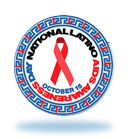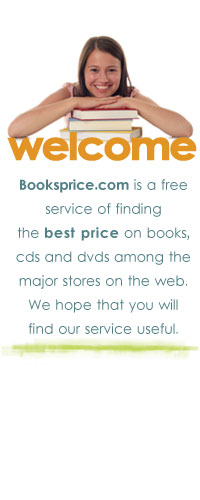September is National Cholesterol Education Month
Too much cholesterol in the blood is one of the main risk factors for heart disease and stroke—two leading causes of death in the United States. One way to prevent these diseases is to detect high cholesterol and treat it when it is found.
What is cholesterol?
Cholesterol is a waxy, fat-like substance that your body needs. But when you have too much in your blood, it can build up on the walls of your arteries and form blockages. This can lead to heart disease, heart attack, and stroke.
blockages. This can lead to heart disease, heart attack, and stroke.
There are two kinds of cholesterol: high-density lipoprotein (HDL) and low-density lipoprotein (LDL). HDL is also called "good" cholesterol. LDL is called "bad" cholesterol. When we talk about high cholesterol, we are talking about "bad" LDL cholesterol.
Seventy-one million American adults have high cholesterol, but only one-third of them have the condition under control.1 September is National Cholesterol Education Month—a good time to resolve to get your cholesterol screened.
What role does screening play?
Screening is the key to detecting high cholesterol. Because high cholesterol does not have symptoms, many people do not know that their cholesterol is too high. Your doctor can do a simple blood test to check your cholesterol level.
The National Cholesterol Education Program recommends that adults aged 20 years or older have their cholesterol checked every 5 years.2
You may need to have your cholesterol checked more often if any of the following statements applies to you:
- Your total cholesterol is 200 mg/dL or higher.
- You are a man older than age 45 or a woman older than age 50.
- Your HDL cholesterol is lower than 40 mg/dL.
- You have other risk factors for heart disease and stroke.3
Although the number of people who said they were screened for cholesterol within the previous 5 years increased from 73% to 76% from 2005-2009,4 only a handful of states have met the 82% Healthy People 2020 objective, and disparities in getting screened persist.5
How can you prevent or treat high cholesterol?
Make therapeutic lifestyle changes by
- Eating a healthy diet. Avoid saturated fats and trans fats, which tend to raise cholesterol levels. Other types of fats, such as polyunsaturated fats, can actually lower blood cholesterol levels. Eating fiber also can help lower cholesterol.
- Exercising regularly. Physical activity can help lower cholesterol. The Surgeon General recommends that adults engage in moderate-intensity exercise for 2 hours and 30 minutes every week.
- Maintaining a healthy weight. Being overweight or obese can raise your cholesterol levels. Losing weight can help lower your cholesterol.
- Not smoking. If you smoke, quit as soon as possible.
Be sure to follow your doctor's instructions and stay on your medications, if prescribed, to control your cholesterol.
Are there clinical and community programs to help address high cholesterol?
A variety of community and clinical activities address screening and treatment for high cholesterol:
The Million Hearts®![]() initiative is a national effort to prevent 1 million heart attacks and strokes in the United States by 2017, by bringing together communities, health systems, nonprofit organizations, federal agencies, and private sector partners. Million Hearts focuses on (1) Improving the "ABCS" of cardiovascular health—Aspirin when appropriate, Blood pressure control, Cholesterol management, and Smoking cessation; and (2) Empowering Americans to make healthy choices such as preventing or quitting tobacco use and reducing salt (sodium) and trans fat consumption.
initiative is a national effort to prevent 1 million heart attacks and strokes in the United States by 2017, by bringing together communities, health systems, nonprofit organizations, federal agencies, and private sector partners. Million Hearts focuses on (1) Improving the "ABCS" of cardiovascular health—Aspirin when appropriate, Blood pressure control, Cholesterol management, and Smoking cessation; and (2) Empowering Americans to make healthy choices such as preventing or quitting tobacco use and reducing salt (sodium) and trans fat consumption.
All states and the District of Columbia are now funded to address heart disease and stroke prevention, with 32 receiving additional funding to enhance their program and reach more people. This includes increasing quality improvement efforts in health systems, such as using health information technology and team-based care as well as community-clinical linkage to support self-management outside of clinical settings, along with health extenders such as community pharmacists and community health workers.
CDC's National Heart Disease and Stroke Prevention program supports states implementing evidence-based practices in community and clinical settings, specifically highlighting cholesterol control within communities.
The National Cholesterol Education Program![]() provides evidence-based resources and recommendations to health care providers, and new guidelines for cholesterol are in development.
provides evidence-based resources and recommendations to health care providers, and new guidelines for cholesterol are in development.
For more information about cholesterol and how you can prevent high cholesterol or keep it in check, see "Your Guide to Lowering Your Cholesterol with TLC" from the National Heart, Lung, and Blood Institute.6
Sources
- CDC. Vital signs: prevalence, treatment, and control of high levels of low-density lipoprotein cholesterol—United States, 1999–2002 and 2005–2008. MMWR. 2011;60(4):109–14.
- The American Heart Association. How to Get Your Cholesterol Tested Website.

- The American Heart Association. Life's Simple 7 Website.

- CDC. Prevalence of cholesterol screening and high blood cholesterol among adults—United States, 2005, 2007, and 2009. MMWR. 2012;61(35):697–702.
- Healthy People. Heart disease and stroke. Healthy People 2020 Objective HDS-6
 .
. - National Heart, Lung, and Blood Institute. Your Guide to Lowering Your Cholesterol with TLC
 [PDF - 1.74MB]
[PDF - 1.74MB] .NIH Publication No. 06-5235. Bethesda, MD: National Institutes of Health, US Department of Health and Human Services; 2005.
.NIH Publication No. 06-5235. Bethesda, MD: National Institutes of Health, US Department of Health and Human Services; 2005.



